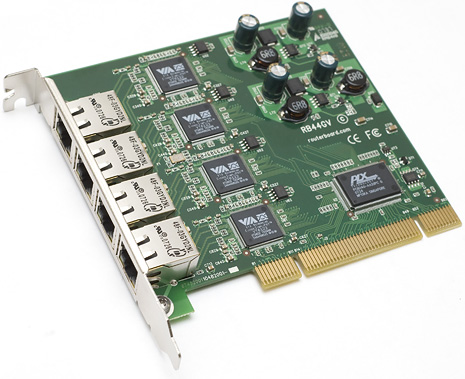Gigabit ethernet card
In computer networking, Gigabit Ethernet (GbE or 1 GigE) is a term describing various technologies for transmitting Ethernet frames at a rate of a gigabit per second (1,000,000,000 bits per second), as defined by the IEEE 802.3-2008 standard. It came into use beginning in 1999, gradually supplanting Fast Ethernet in wired local networks where it performed considerably faster. The cables and equipment are very similar to previous standards, and by the year 2010, were very common and economical.
Half-duplex gigabit links connected through hubs are allowed by the specification,[1] but full-duplex usage with switches is much more common.The result of research done at Xerox PARC in the early 1970s, Ethernet evolved into a widely implemented physical and link layer protocol. Fast Ethernet increased speed from 10 to 100 megabits per second (Mbit/s). Gigabit Ethernet was the next iteration, increasing the speed to 1000 Mbit/s. The initial standard for gigabit Ethernet was produced by the IEEE in June 1998 as IEEE 802.3z, and required optical fiber. 802.3z is commonly referred to as 1000BASE-X, where -X refers to either -CX, -SX, -LX, or (non-standard) -ZX.
IEEE 802.3ab, ratified in 1999, defines gigabit Ethernet transmission over unshielded twisted pair (UTP) category 5, 5e, or 6 cabling and became known as 1000BASE-T. With the ratification of 802.3ab, gigabit Ethernet became a desktop technology as organizations could use their existing copper cabling infrastructure.
